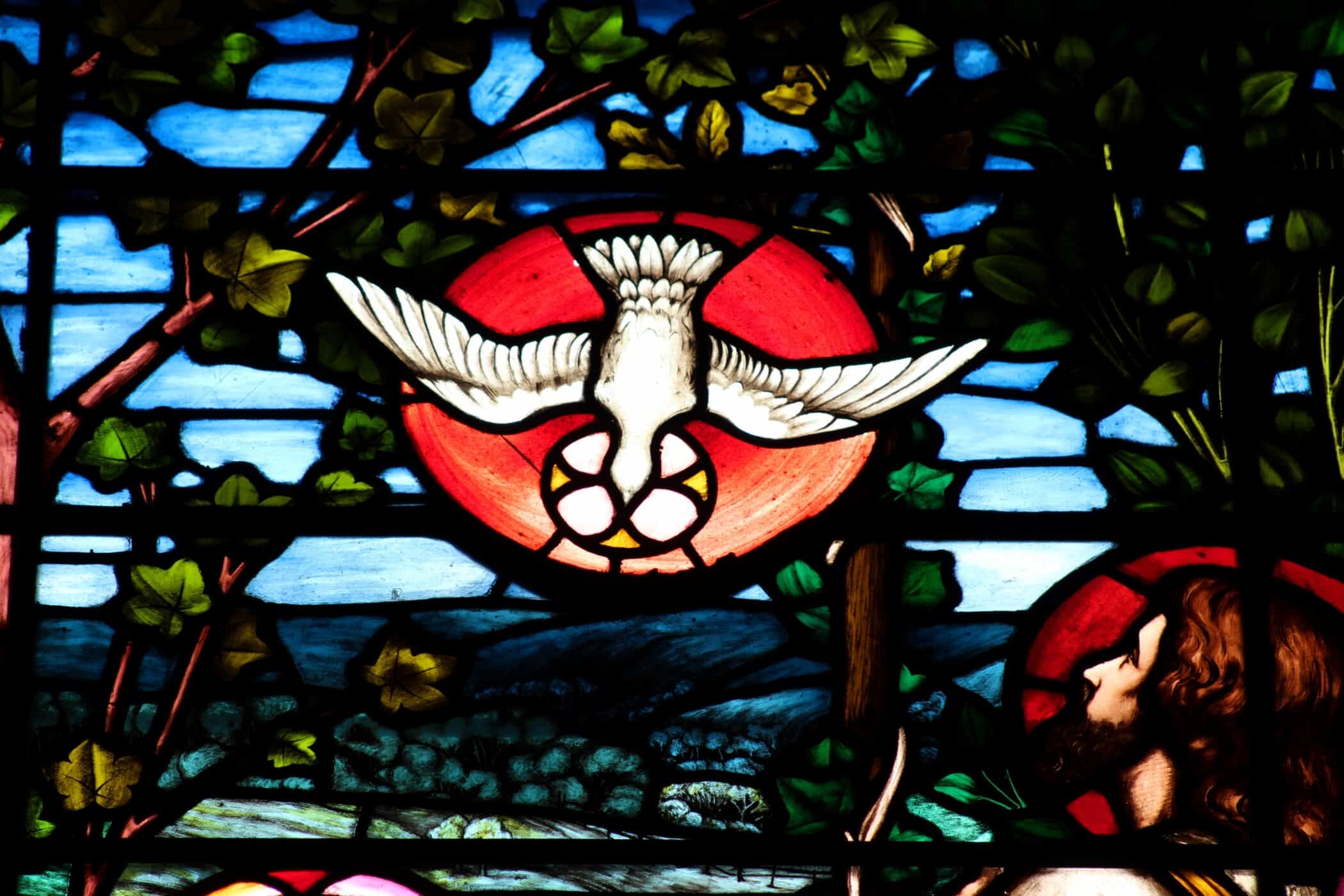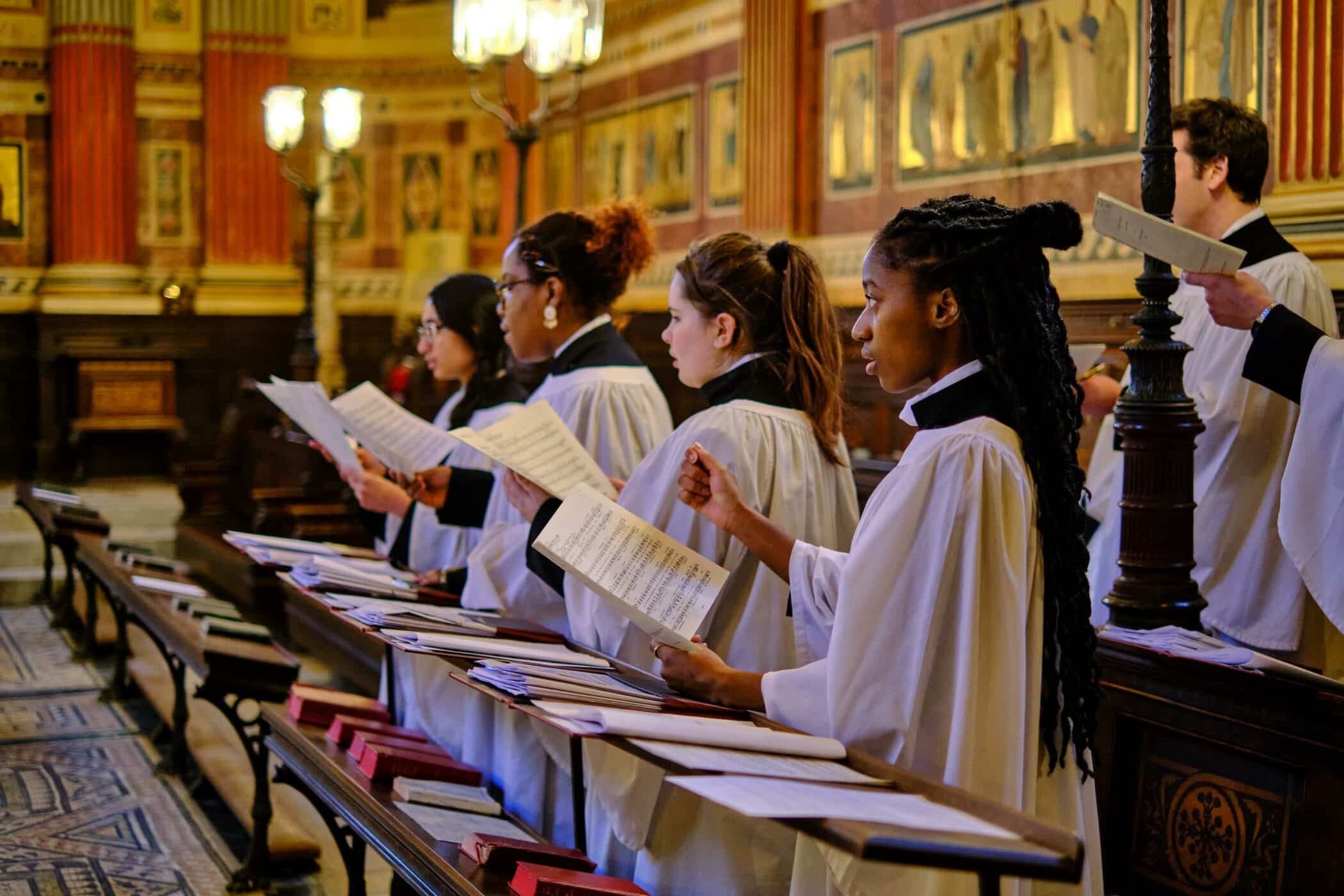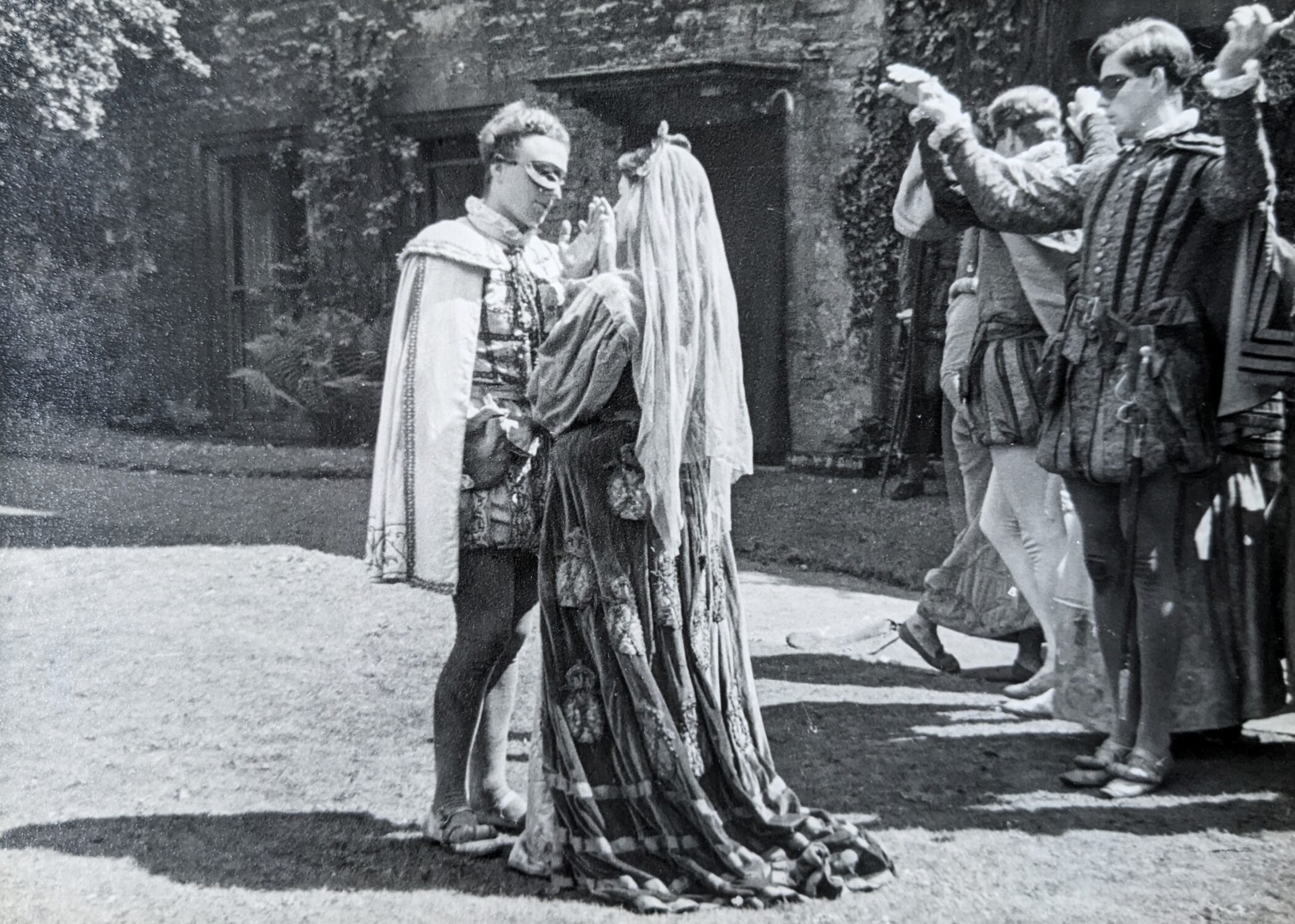Chapel history
Seven centuries of worship
People have worshipped on the site of Worcester College for over 700 years, and certainly from before the foundation in 1283 of our mother foundation, Gloucester College. In this Benedictine house of studies, there may have been an ‘ancient chapel’ between the north and south sides of Pump Quad, part of the original Carmelite buildings given by Sir John Giffard of Bromsfield to the Benedictine order. It is not known, however, where the first Chapel of the College was located, whether on the site of the present building or, more likely, further south along the present cloister. It was a common place of worship for the monks of the various studia, ‘constructed at the common expense of the [Benedictine] order’.
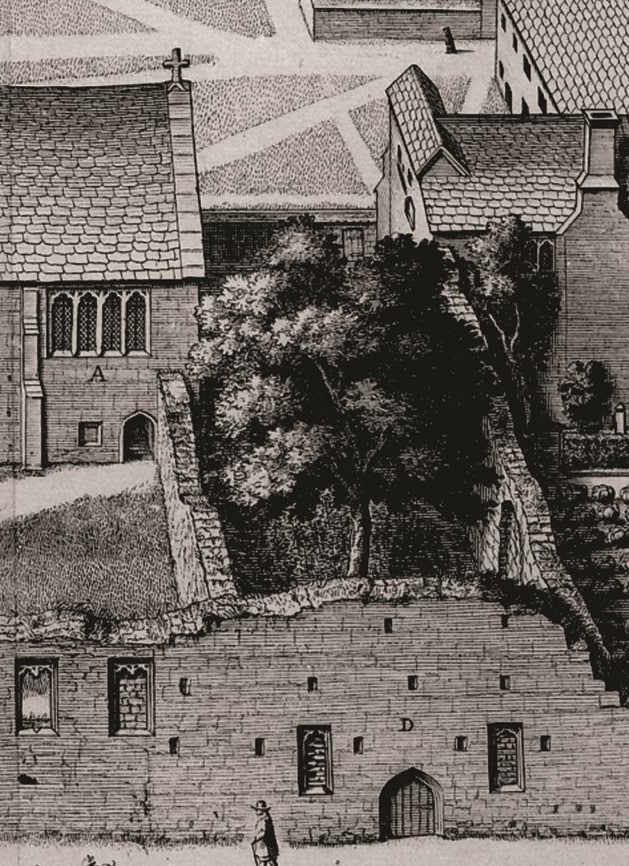
The ruined Chapel seen in a 1675 engraving by David Loggan
The Chapel of Abbot John
There was also a chapel and vestry associated with abbot John Whethamstede, dedicated to St Benedict and built about 1420 through donations from various bishops and abbots by the solicitation of Thomas de Ledbury, the then prior. Abbot John gave money towards the fabric and towards the glass windows. By 1630, following the dissolution of the monasteries, the Chapel had fallen into ruin.

A fresh foundation
A few years after the founding of Worcester College in 1714, Margaret Alchorne bequeathed £800 to the College for the building of a Chapel, Hall and Library. These buildings were designed by Dr George Clarke and Nicholas Hawksmoor, with the plaster interiors by James Wyatt. It is thought that the present JCR was used as a chapel until the completion of the new building in 1791. Both Chapel and Hall were made wider than originally planned on their outer sides – the west doors of both are therefore not centrally placed.
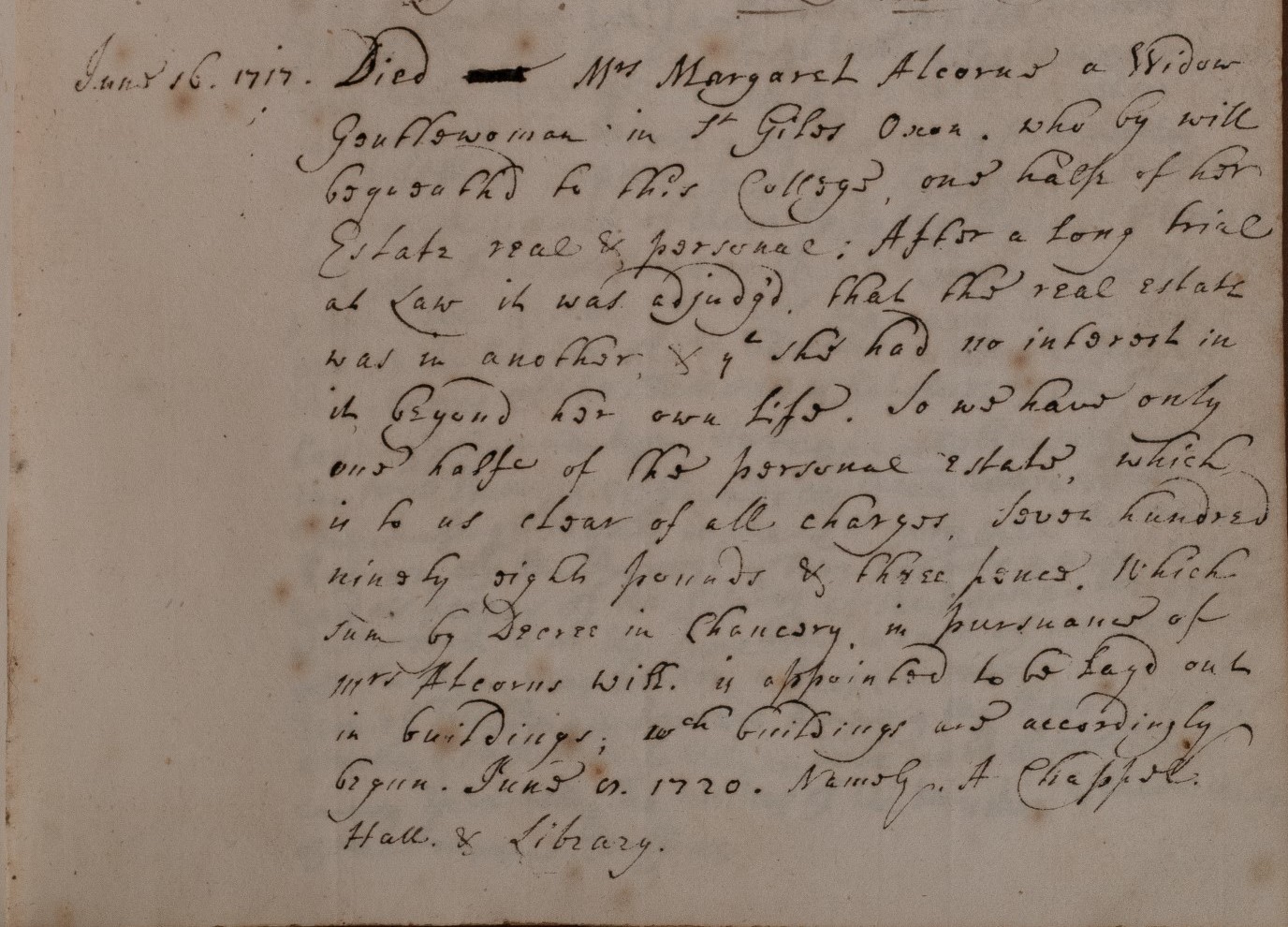
Entry in the College Benefactors’ Book relating to the benefaction of Margaret Alchorne
Sordid state of affairs
The authors of the 1900 College history described the Chapel thus: ‘The building was lit by windows only on the east and south; the walls were covered with a coating of stone-coloured paint begrimed with dust and gas; lofty box-like pews, too often the convenient shelter of irreverence, lined either side, and twice in each term, when the Provost preached a sermon, a somewhat loftier box was dragged into the middle of the chapel to serve as pulpit. Dissatisfaction with this sordid state of things first took the shape of a scheme for the erection of a new chapel on the open side of the quadrangle, but fortunately this was set aside, and the plans of Mr. Burges for the renovation and decoration of the interior of the existing chapel were finally adopted.’
Enter Burges
The renovation work began in 1863 and finished the following year. Burges retained the structure, adding three windows on the north side, and embellished the mouldings of the ceiling. The windows were designed by Henry Holiday and their depictions of moments in the life of Christ (the Annunciation, Epiphany, teaching in the Temple, Baptism, Crucifixion, the empty tomb, and the Ascension) are surmounted by representations of the prophets, holding scrolls of prophecy which pertain to the image in the window. The four Evangelists occupy niches at the four corners.
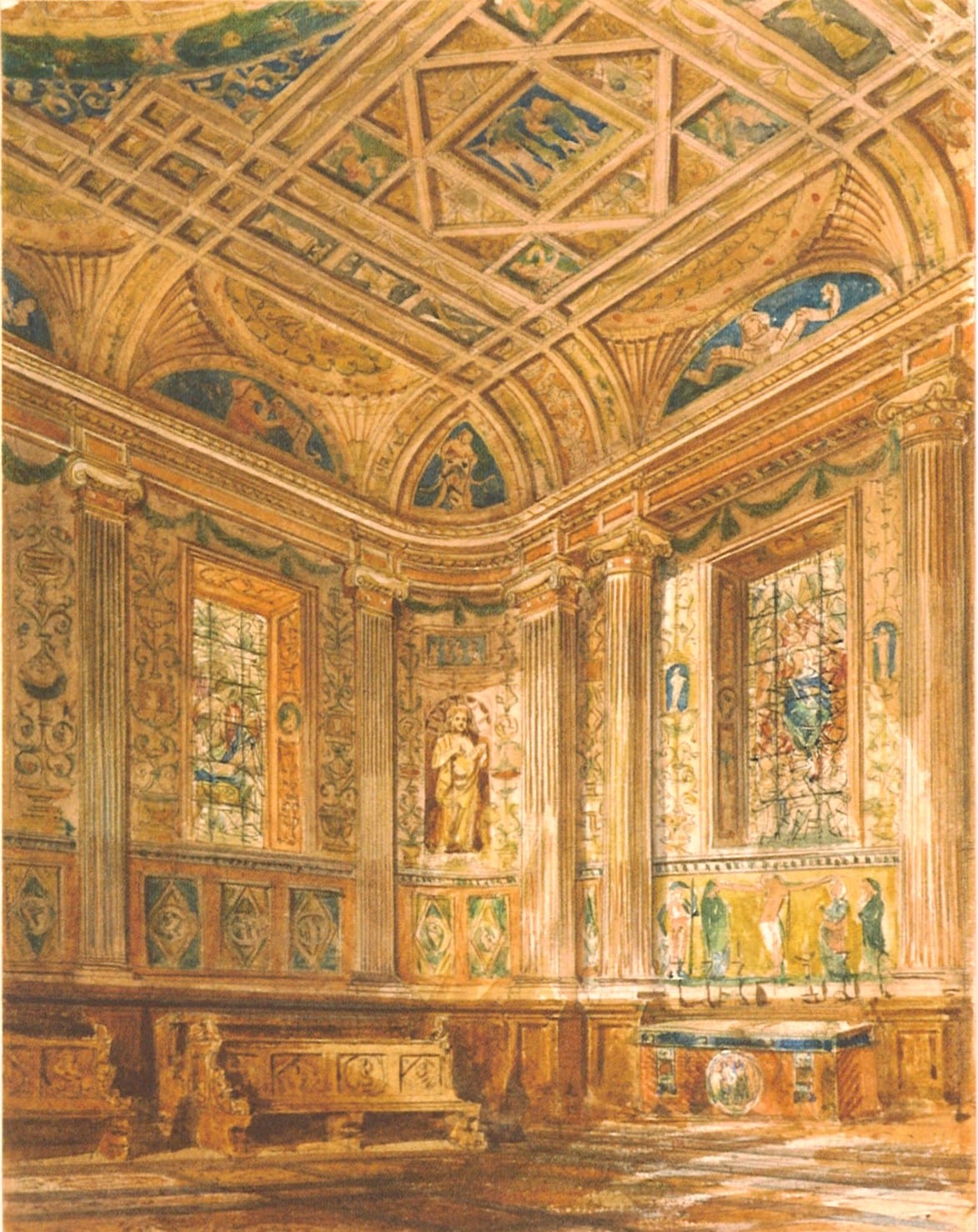
Burges' design painted by Axel Haig (1863)
'God saw that it was good'
The works of creation, found around the windows, in the frescoes, and featured most obviously in the carved animals at the ends of the stalls, are enjoined to ‘bless the Lord’, as in the words of the Benedicite, written above the windows. In the frescoes the faces of the disciples, as well as those of Augustine and Ambrose, Charlemagne, Benedict, Catherine of Siena, as well as Aquinas, Luther, and Pascal, face the east end in prayer. Just above the altar there are representations of a Benedictine monk, holding a model of the medieval college buildings, and Sir Thomas Cookes, founder of Worcester, holding a model of the eighteenth-century range.

Statue of St Matthew

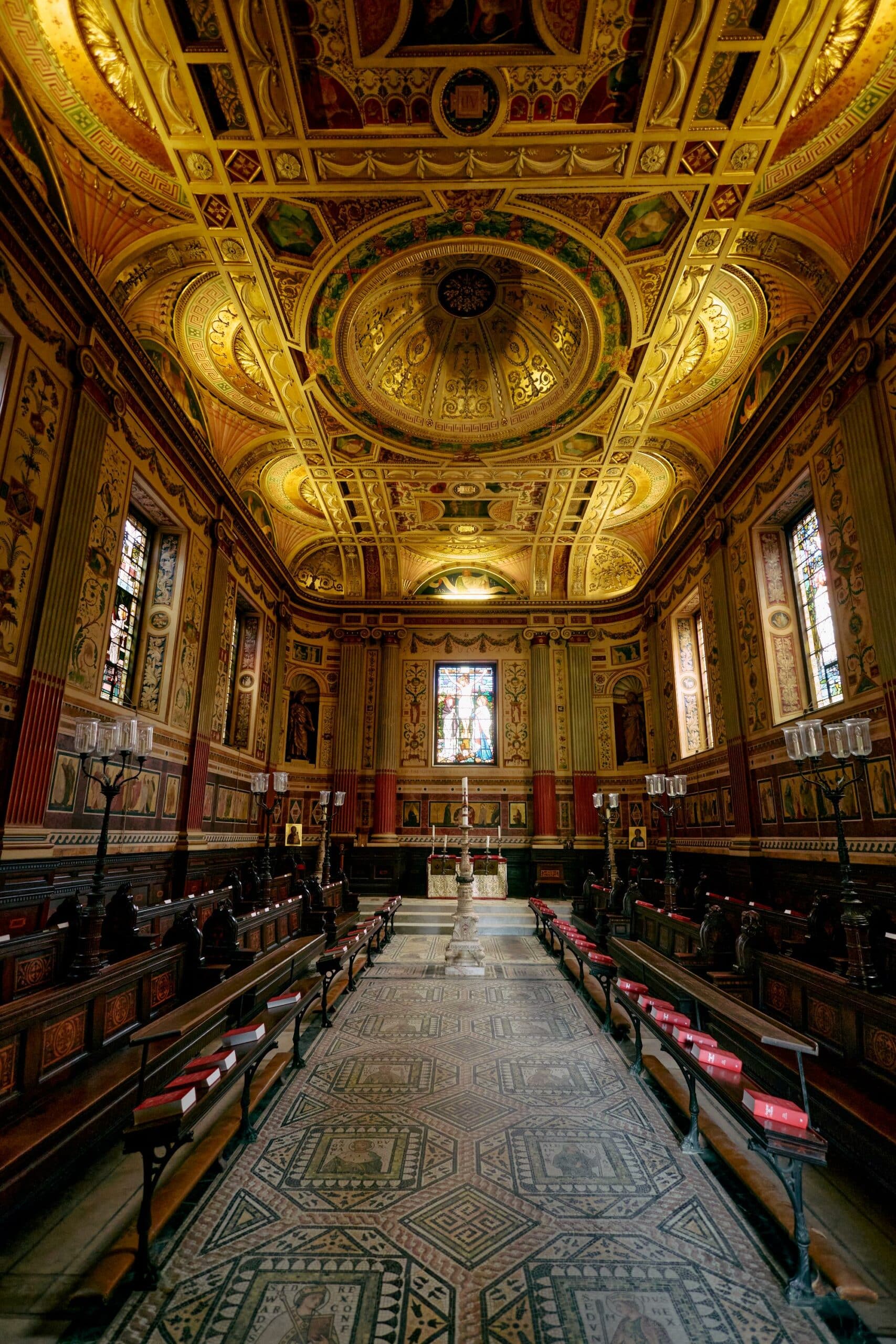
Burges' completed scheme
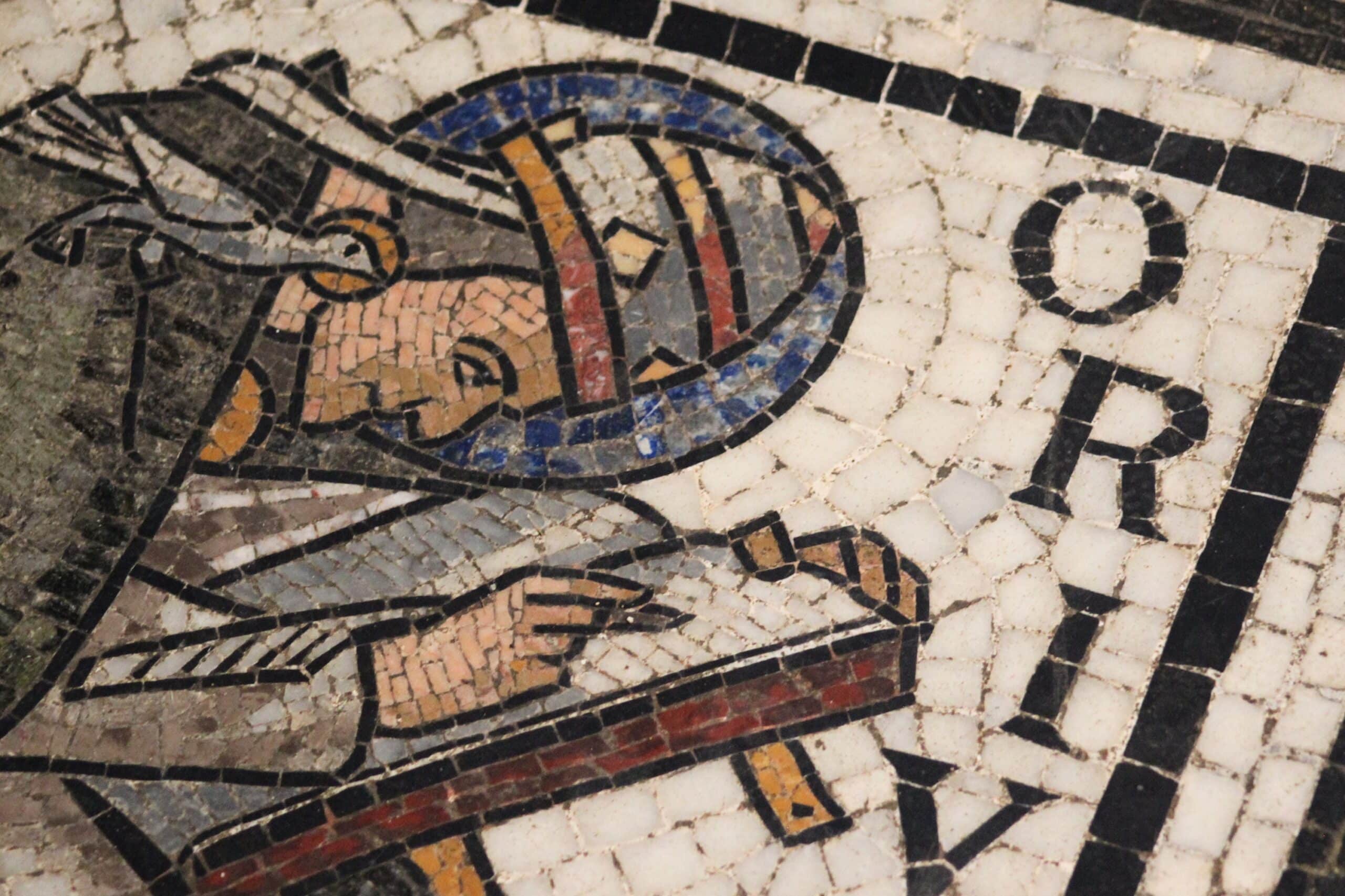
The mosaic floor
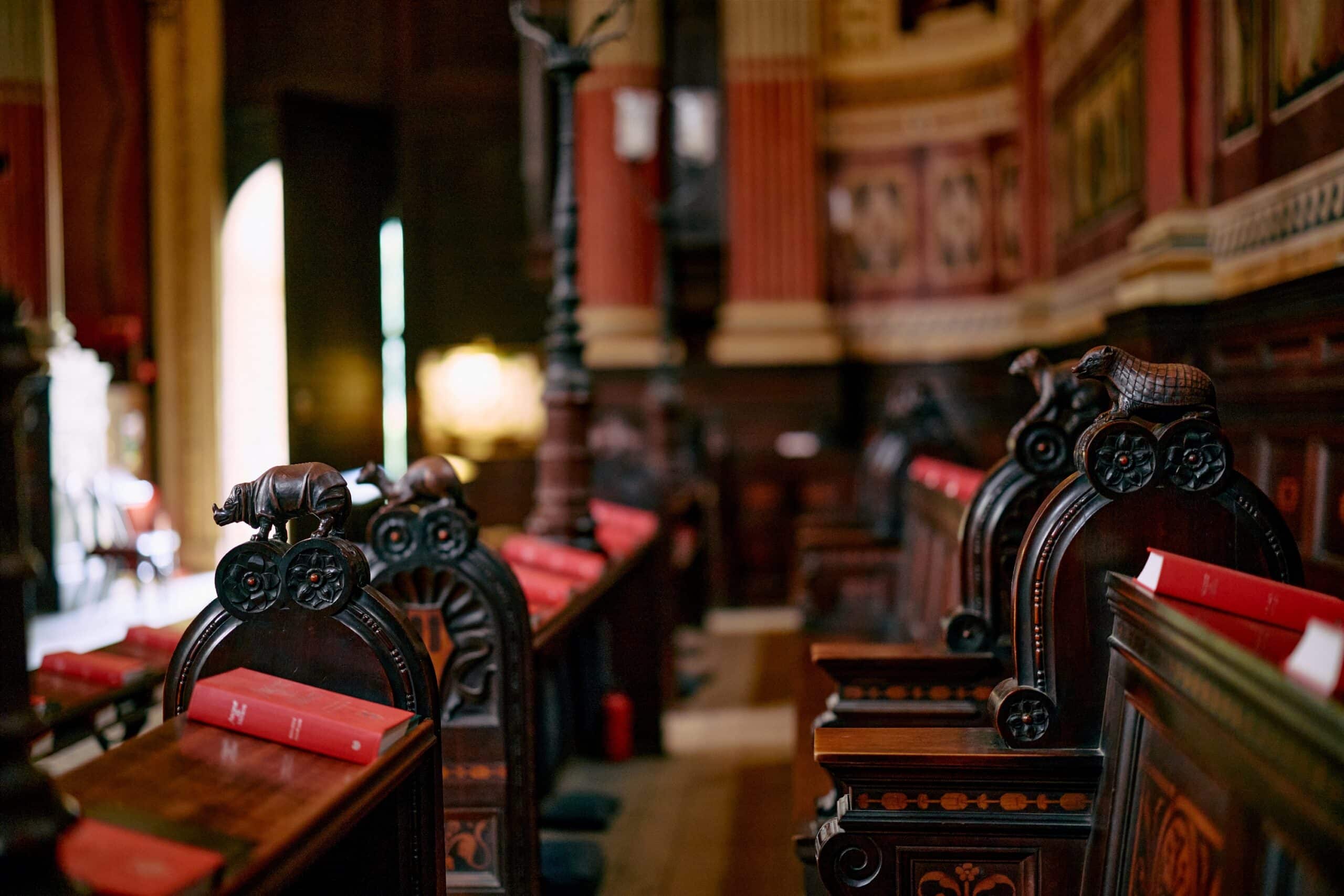
Carved animals in the stalls

The Chapel was refurbished at the beginning of this century and continues to be a daily home for prayer, music and tranquility.









